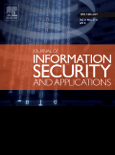
Journal of Computer Security
Scope & Guideline
Advancing the frontiers of cybersecurity research.
Introduction
Aims and Scopes
- Cybersecurity Protocols and Methodologies:
The journal emphasizes the development and evaluation of security protocols, including cryptographic techniques, authentication mechanisms, and data protection methods. This includes innovative approaches to secure communications and data integrity. - Malware and Threat Detection:
Research in this area focuses on the design and implementation of detection systems for various types of malware and network attacks, utilizing machine learning and deep learning techniques to enhance accuracy and robustness. - Privacy Preservation Techniques:
The journal covers advancements in privacy-preserving technologies, particularly in contexts such as healthcare data sharing, IoT, and cloud computing, highlighting methods that protect user data while allowing for its utility. - Formal Security Models and Analysis:
A significant portion of the journal's publications is dedicated to formal models for analyzing security protocols, including proofs of security, verification techniques, and the application of mathematical frameworks to assess security properties. - Human and Socio-Technical Aspects of Security:
The journal also explores the intersection of human behavior and technology, addressing the socio-technical dimensions of security, including user privacy concerns, usability, and the economic aspects of security interventions.
Trending and Emerging
- Privacy-Preserving Techniques for Emerging Technologies:
There is a growing trend towards developing privacy-preserving methods specifically tailored for new technologies such as edge computing, IoT, and healthcare systems, indicating the importance of privacy in these rapidly evolving fields. - Machine Learning and AI in Cybersecurity:
Research leveraging machine learning and artificial intelligence for threat detection, anomaly detection, and security protocol verification is on the rise, showcasing the potential of these technologies to enhance cybersecurity measures. - Blockchain and Decentralized Security Solutions:
The exploration of blockchain technology for enhancing security in various applications is becoming increasingly prevalent, highlighting its potential for secure data sharing, authentication, and integrity verification. - Formal Methods for Security Assurance:
There is a notable increase in the application of formal methods for the verification of security properties, reflecting a trend towards rigorous mathematical approaches to ensure the reliability of security protocols. - Cybersecurity in the Context of Human Behavior:
Research addressing the socio-technical aspects of cybersecurity, including user behavior and privacy concerns, is gaining attention, emphasizing the need for solutions that consider human factors in security design.
Declining or Waning
- Traditional Network Security Approaches:
While foundational, traditional methods of network security, such as basic firewalls and intrusion detection systems, appear to be receiving less focus as researchers shift towards more complex, adaptive security solutions that integrate AI and machine learning. - Static Analysis of Security Protocols:
Research centered around static analysis techniques for security protocols has been less prominent, possibly due to the growing interest in dynamic and adaptive methods that account for real-time threats and vulnerabilities. - General Surveys on Cybersecurity:
There is a noticeable decline in general survey papers that provide broad overviews of cybersecurity topics, as the journal increasingly favors focused studies that address specific problems or innovative solutions. - Legacy Systems Security:
The focus on securing legacy systems has waned, as newer technologies and frameworks gain traction. Researchers are now prioritizing modern architectures, such as cloud and edge computing, which pose different security challenges.
Similar Journals

Journal of Computer Virology and Hacking Techniques
Decoding Hacking Techniques for a Safer Digital WorldWelcome to the Journal of Computer Virology and Hacking Techniques, a prestigious academic publication dedicated to the evolving fields of cybersecurity and digital threats. Published by Springer France, this open-access journal has been at the forefront of disseminating high-quality research since its inception in 2014. With an increasing impact in areas such as computational theory, hardware architecture, and software security, the journal holds a significant position, classified in the Q2 and Q3 quartiles across several categories in 2023. The journal aims to provide a platform for researchers, professionals, and students to explore the latest advances in combatting cyber vulnerabilities and understanding hacking techniques. In alignment with its open-access policy, the journal ensures that knowledge is readily available to a global audience, reinforcing its mission to enhance the scholarly discourse surrounding computer virality while adhering to rigorous academic standards.

ACM Transactions on Privacy and Security
Empowering Innovations in Privacy and Security.ACM Transactions on Privacy and Security, published by the Association for Computing Machinery, is a prestigious journal dedicated to the field of computer science, with a particular focus on privacy and security in modern computing environments. Since its inception in 2016, this journal has become a vital resource for researchers, professionals, and students alike, addressing the increasing concerns surrounding data protection and risk management. With an impressive impact factor and recognition as a Q1 journal in both Computer Science (Miscellaneous) and Safety, Risk, Reliability and Quality, it ranks among the top publications in its field, positioned at the 73rd percentile in General Computer Science and the 71st percentile in Engineering. The journal’s Open Access options enhance accessibility to cutting-edge research, fostering collaboration and innovation in the rapidly evolving landscape of privacy and security. Readers can expect high-quality peer-reviewed articles that contribute significantly to both theoretical and practical advancements in technology and data security.

MOBILE NETWORKS & APPLICATIONS
Advancing Knowledge in Mobile Networks and ApplicationsMOBILE NETWORKS & APPLICATIONS, published by Springer, is a leading journal in the fields of Computer Networks and Communications, Hardware and Architecture, Information Systems, and Software. With an impact factor that underscores its significance in the realm of mobile computing, this journal serves as a critical platform for disseminating cutting-edge research and innovative applications from both theoretical and practical perspectives. Established in 1996 and continuing until 2024, it has consistently ranked within the Q2 quartile across various computer science categories, highlighting its commitment to excellence and rigorous peer review. The journal's reach extends globally, providing valuable insights to researchers, professionals, and students alike. Notably, it occupies impressive ranks in Scopus, including 51st in Computer Networks and Communications and 26th in Hardware and Architecture, illustrating its high standing in the academic community. Engaging with this journal means accessing a wealth of knowledge that drives forward the rapidly evolving landscape of mobile networks and applications.

IEEE MICRO
Shaping Tomorrow's Technology Through Rigorous ResearchIEEE MICRO is a prestigious journal published by the IEEE Computer Society, focusing on the latest advancements in the fields of electrical and electronic engineering, hardware, and software architecture. With a remarkable track record since its inception in 1981, this influential journal holds a Q1 classification in its respective categories, underscoring its significant impact in research and practical applications. The journal enjoys an impressive ranking within the 80th percentile in Electrical and Electronic Engineering and the 78th percentile in Hardware and Architecture, further cementing its reputation among the academic and professional community. Though not an open access journal, IEEE MICRO provides vital insights and cutting-edge research findings that shape the future of technology, making it an essential resource for researchers, practitioners, and students eager to stay at the forefront of innovation.

COMPUTERS & SECURITY
Leading the charge in cutting-edge cybersecurity research.COMPUTERS & SECURITY is a leading international journal published by Elsevier Advanced Technology, dedicated to advancing the interdisciplinary field of cybersecurity. With an impact factor reflecting its prestige, this journal holds a remarkable Q1 ranking in both Computer Science and Law categories according to the 2023 rankings. Since its inception in 1982, it has provided a platform for high-quality research that addresses key challenges in computer security, cyber law, and technology policy, and aims to evolve as the digital landscape continues to transform. Researchers and professionals seeking to contribute to vital discussions about security vulnerabilities, threat mitigation, and legal frameworks will find this journal an invaluable resource. Although it is not open access, the journal maintains a robust presence in the scholarly community, with exceptional rankings in Scopus—#7 in Social Sciences (Law) and #18 in General Computer Science, both highlighting its critical role in shaping knowledge and practice in these fields.

EURASIP Journal on Information Security
Connecting researchers to shape the future of security.EURASIP Journal on Information Security, published by Springer International Publishing AG, is a premier open access journal dedicated to the rapid dissemination of research findings in the field of information security. With an ISSN of 2510-523X and a strong reputation reflected in its 2023 quartile rankings—Q1 in Computer Science Applications and Q2 in Signal Processing—this journal serves as a critical platform for researchers, professionals, and students alike to explore cutting-edge advancements in security technologies and methodologies. Established in 2007 as an open access journal, it promotes accessibility and encourages collaboration among the global scientific community. The journal's objectives include fostering innovative research that addresses the complex challenges of information security in today's digital landscape. With its base in the United Kingdom, EURASIP Journal on Information Security is committed to contributing to the evolution of security practices, ensuring that its audience stays at the forefront of the discipline.

Journal of Cryptographic Engineering
Pioneering the future of information security and cryptographic techniques.The Journal of Cryptographic Engineering, published by Springer Heidelberg, is a prominent platform dedicated to advancing the field of cryptography and its applications in secure communication and information security technologies. With the ISSN 2190-8508 and E-ISSN 2190-8516, this journal showcases rigorous and innovative research contributions from 2011 to 2024, reflecting its commitment to excellence in academic publishing. Recognized among the Q2 category in Computer Networks and Communications and Software, it ranks impressively within the Scopus framework, securing positions in the 59th and 54th percentiles respectively. The Journal aims to facilitate a comprehensive understanding of cryptographic techniques, promote collaboration among researchers, and provide a vital resource for students and professionals. By maintaining high standards of peer review and providing a platform for cutting-edge research, it plays a crucial role in shaping the future of cryptographic engineering.

Internet Technology Letters
Exploring Innovations in Digital Connectivity.Internet Technology Letters, published by John Wiley & Sons Ltd, is a dynamic and rapidly evolving journal that focuses on the innovative applications and developments within the realms of Artificial Intelligence, Computer Networks and Communications, Information Systems, and Software. With its E-ISSN 2476-1508 and a defined convergence period from 2018 to 2024, this journal seeks to address emerging trends and critical challenges confronting the digital landscape today. Recognized in the Q3 quartile range across multiple computer science categories in 2023, it serves as a valuable resource for researchers, professionals, and students seeking to advance their knowledge and stay updated on significant technological advancements. While currently not an open-access journal, Internet Technology Letters holds a prominent position on platforms like Scopus, ranked within the middle percentiles, reflecting its contribution to the academic community. The journal aims to foster connectivity between academia and industry, encouraging submissions that promote interdisciplinary collaboration and innovation. By creating a platform for sharing groundbreaking research, Internet Technology Letters plays a crucial role in shaping future technological landscapes.

Journal of Cloud Computing-Advances Systems and Applications
Exploring the Future of Cloud InnovationsThe Journal of Cloud Computing - Advances Systems and Applications, published by Springer, serves as a premier platform for disseminating cutting-edge research in the fields of cloud computing, computer networks, and software technologies. With an impressive impact factor and ranked in the top quartile for Computer Networks and Communications and Software categories in 2023, this open access journal has gained significant recognition within the academic community since its establishment in 2012. The journal not only provides valuable insights into innovative applications and advancements in cloud technologies but also supports collaboration among scholars, practitioners, and industry leaders. Operating from the vibrant hub of New York City, it boasts a robust international readership, ensuring that the latest findings reach a diverse audience. Authors and researchers are encouraged to engage with this vital resource, which is dedicated to exploring the transformative potential of cloud computing across multiple disciplines.

Journal of Information Security and Applications
Pioneering Research for a Secure Digital FutureJournal of Information Security and Applications, published by ELSEVIER, is a premier outlet for cutting-edge research in the field of information security and applications. With a dedicated ISSN of 2214-2126 and an E-ISSN of 2214-2134, this journal ranks impressively in the top quartile (Q1) across multiple categories as of 2023, including Computer Networks and Communications, Safety, Risk, Reliability and Quality, and Software. The journal’s notable Scopus rankings further reflect its impact, holding positions within the top 15% in several engineering and computer science areas. Spanning a converged period from 2013 to 2024, the journal aims to disseminate high-quality research findings, facilitating a vibrant platform for scholars, practitioners, and students to engage with contemporary challenges in information security. Although not an open-access journal, the knowledge shared within its pages is indispensable for those dedicated to advancing the technological and theoretical underpinnings of security measures in various applications.